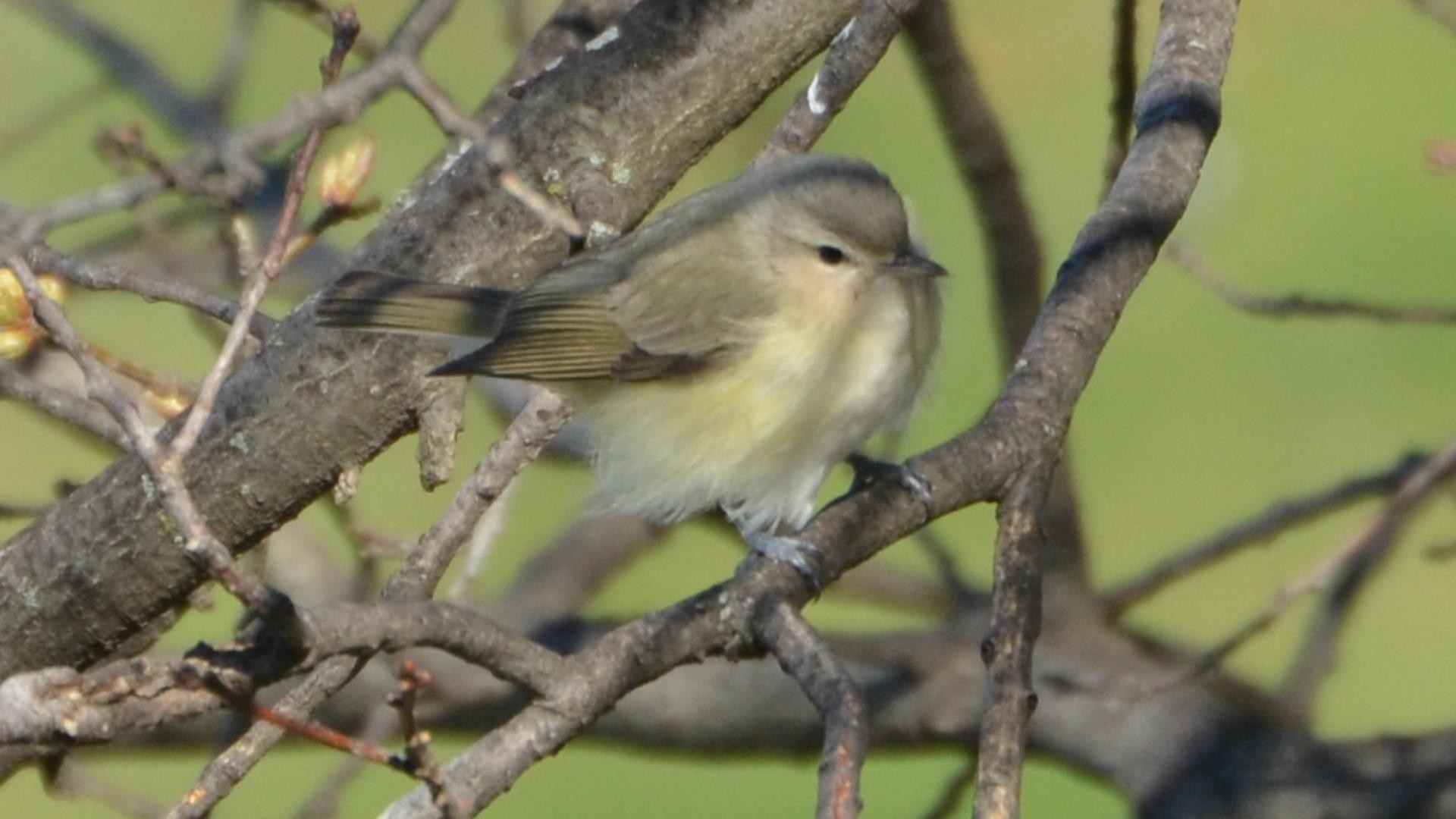Warbling Vireo
A species of Vireos, Also known as Warbling Flycatcher Scientific name : Vireo gilvus Genus : Vireos
Warbling Vireo, A species of Vireos
Also known as:
Warbling Flycatcher
Botanical name: Vireo gilvus
Genus: Vireos
Content
Description General Info
 Photo By Andy Reago & Chrissy McClarren , used under CC-BY-2.0 /Cropped and compressed from original
Photo By Andy Reago & Chrissy McClarren , used under CC-BY-2.0 /Cropped and compressed from original Description
The warbling vireo (Vireo gilvus) is a small North American songbird. Its breeding habitat is open deciduous and mixed woods from Alaska to Mexico and the Florida Panhandle. It often nests along streams. It migrates to Mexico and Central America. Measurements: Length: 4.7-5.1 in (12-13 cm) Weight: 0.3-0.6 oz (10-16 g) Wingspan: 8.7 in (22 cm) They are mainly olive-grey on the head and upperparts with white underparts; they have brown eyes and the front of the face is light. There is a white supercilium. They have thick blue-grey legs and a stout bill. Western birds are generally smaller and have darker grey crowns. Warbling vireos forage for insects in trees, hopping along branches and sometimes hovering. They also eat berries, especially before migration and in winter quarters, where they are – like other vireos – apparently quite fond of gumbo-limbo seeds, though they will not venture into human-modified habitat to get them. They make a deep cup nest suspended from a tree branch or shrub, placed relatively high in the east and lower in the west. The male helps with incubation and may sing from the nest. The warbling vireo's song is a cheerful warble, similar to that of the painted bunting. There are subtle differences in song between eastern and western birds, at least where the ranges meet in Alberta. Some authorities split the eastern and western races of this species into separate species: The western warbling vireo, V. swainsoni, includes V. g. swainsoni, which breeds from southeastern Alaska and southwestern Northwest Territories to the Sierra San Pedro Mártir, Baja California, and V. g. brewsteri, which breeds from southern Idaho, Wyoming, and Montana to south-central Oaxaca. These two subspecies winter in Mexico. The swainsoni group also includes V. g. victoriae, an isolated population breeding in the Sierra de la Laguna, Baja California Sur, and migrating to unknown wintering grounds. The eastern warbling vireo, V. gilvus, breeds from central Alberta and northern Montana east and south through most of the United States and parts of southern Canada, outside the range of the previous group. It winters south of the Isthmus of Tehuantepec from south-central Chiapas to Nicaragua. It completes its autumn molt on the breeding grounds, while the swainsonii group completes it after leaving. The brown-capped vireo (Vireo leucophrys), resident in Central America and northern South America, is sometimes considered conspecific with the warbling vireo. 
Size
13-14 cm (5-5.5 in)
Colors
Yellow
Bronze
Gray
White
Life Expectancy
13 years
Nest Placement
Tree
Incubation Period
1 - 2 broods
Number of Broods
12 - 14 days
Nestling Period
13 - 14 days
Feeding Habits
Warbling Vireo primarily consume insects such as caterpillars, moths, butterflies, ladybugs, beetles, bees, ants, wasps, and spiders, with a seasonal addition of elderberries, poison oak berries, and other fruits. They typically forage in treetops, employing various techniques, including gleaning, hovering, stalking, hawking, and flycatching. They often subdue larger prey by striking them against perches. Lone foraging is common during breeding, while they join mixed-species flocks otherwise.
Habitat
Warbling Vireo's primary habitats include mature deciduous woodlands, particularly near bodies of water such as streams and lakes. They adapt to altitudes ranging up to 10,500 feet and can occupy areas affected by human activity, including urban parks and orchards. In winter, they migrate to environments like thorn forests and shade-coffee plantations in western Mexico and northern Central America.
Nest Behavior
Females mainly build the nest, sometimes using materials from neighboring nests. Warbling Vireo choose nesting sites within trees or shrubs, varying from 3 to 140 feet high. Nest construction timing, egg-laying, and specifics of parental care are not provided within the 50-word limit.
Nest Characteristics
Warbling Vireo nests are rough, slightly rounded hanging cups woven from plant matter, cobwebs, lichens, animal hair, and occasionally feathers. Suspended from forked twigs in deciduous trees or tall shrubs, they're about 3 inches across, 2-3 inches deep, with an inner cup 2 inches wide and 1.5 inches deep.
Dite type
Insectivorous
General Info
Feeding Habits
Bird food type
Bird Feeder Type

Small Hopper

Platform
Sounds
Call
Recording location: Mexico
Song
Recording location: United States
Behavior
Warbling Vireo predominantly occupy the upper strata of deciduous forests, engaging heavily in territorial singing to stake claims during the breeding period. The males exhibit distinctive courtship displays featuring a rhythmic side-to-side sway and wing quivering. A unique aspect of their breeding behavior is the male's vigilant guard over the female during nest building and a cooperative approach in raising offspring. Both sexes participate in feeding the chicks, often synchronizing parental presence for constant nestling care. A notable behavior is their aggressive defense against potential predators like jays and squirrels, emphasizing their protective nature.
Species Status
Not globally threatened.